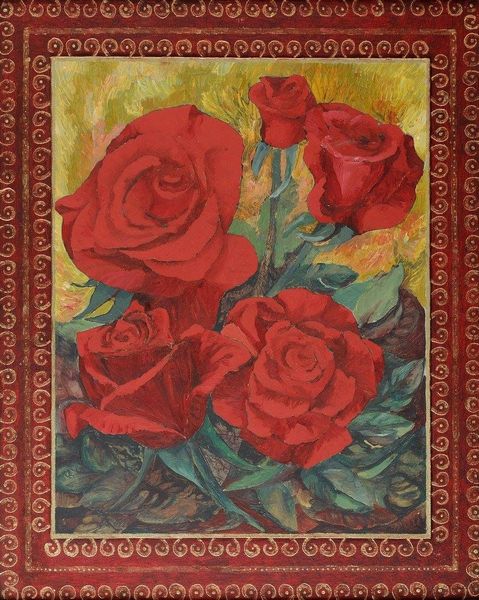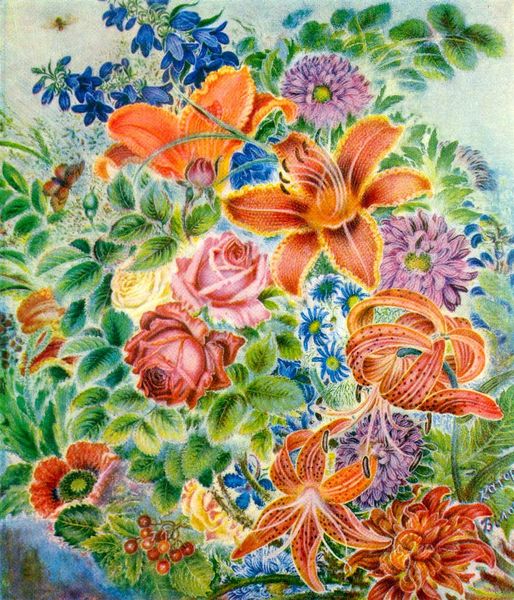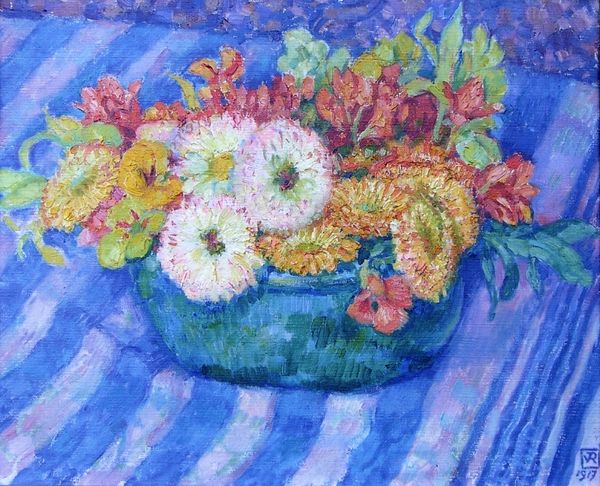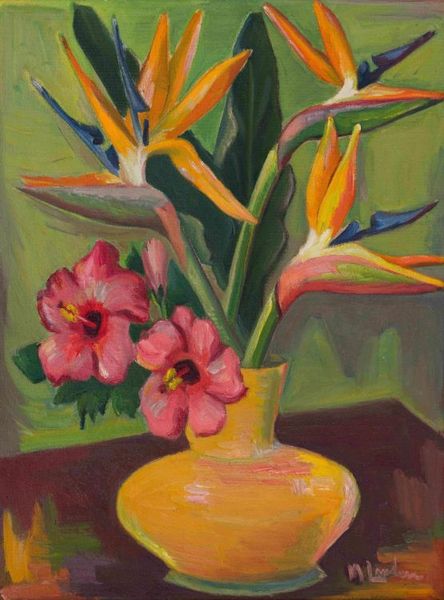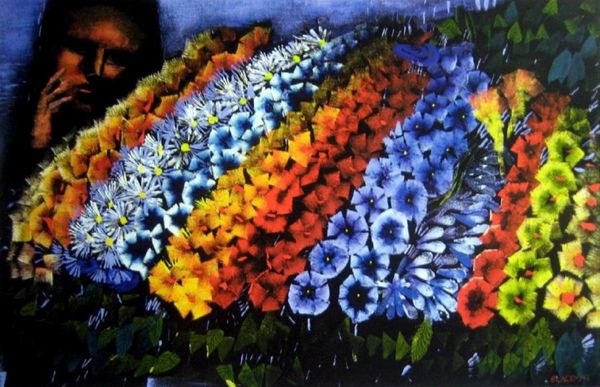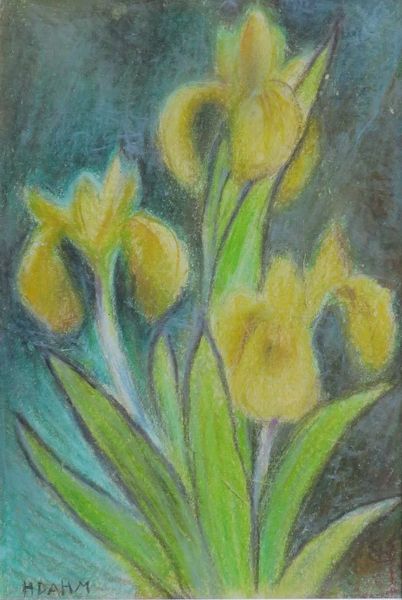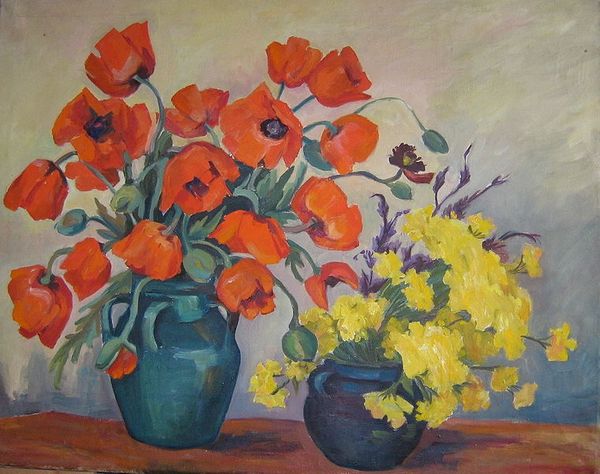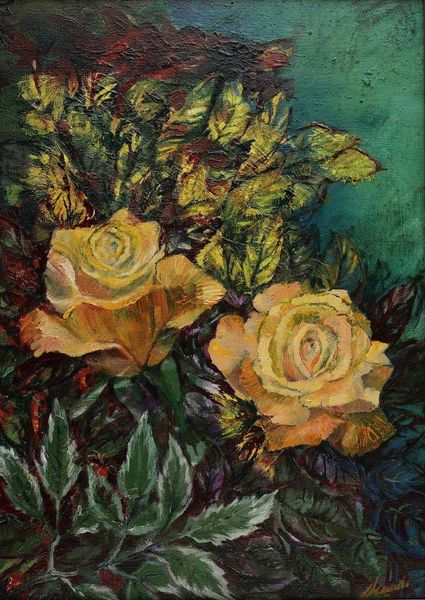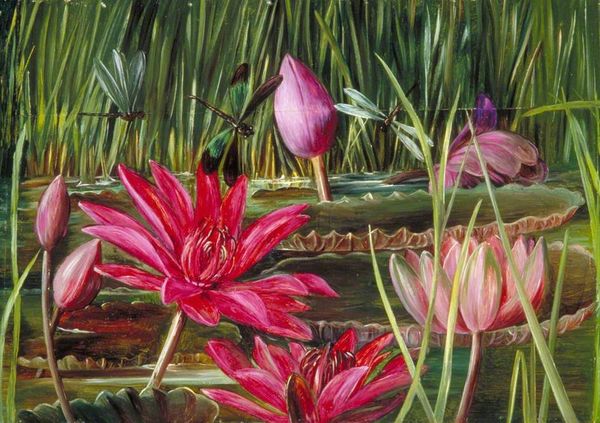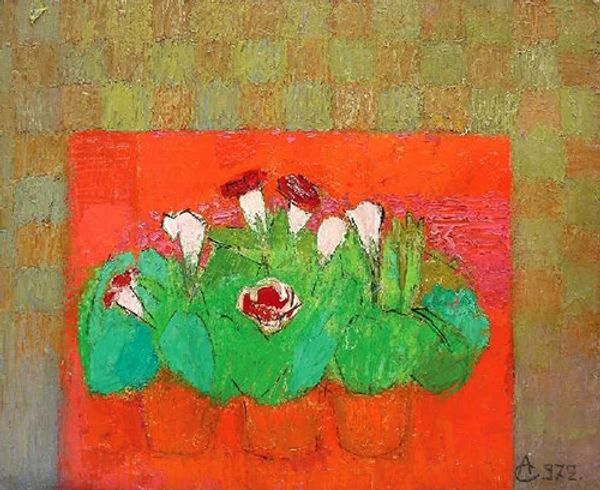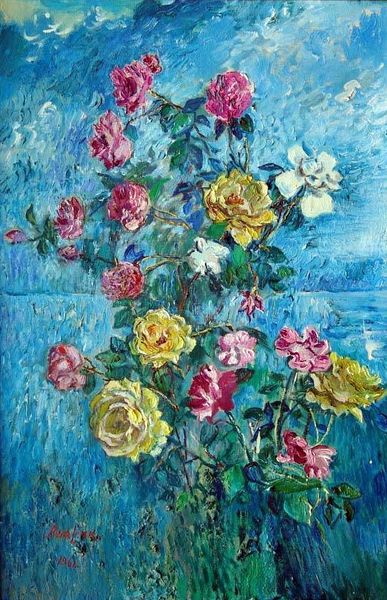
painting, acrylic-paint, impasto
#
abstract painting
#
painting
#
flower
#
acrylic-paint
#
impasto
#
acrylic on canvas
#
plant
#
expressionism
#
expressionist
Copyright: Małgorzata Serwatka,Fair Use
Editor: This painting is titled "Tulips," made with acrylics and impasto. It looks pretty expressive! All that visible brushwork and bright color give it a very immediate feeling. What strikes you when you see this piece? Curator: Well, first, consider the materiality. The thick application of acrylic, that impasto you mentioned, isn't just about aesthetics. It’s about the physical act of painting, the labor involved in layering that paint onto the canvas. How does that materiality change our perception? Editor: It makes it feel less…precious? Like you can see the effort that went into it, rather than it just appearing effortlessly beautiful. Curator: Precisely. And consider that this is a still life, a traditionally bourgeois subject. By emphasizing the "craft" aspect through visible labor, Serwatka arguably subverts those traditional class boundaries embedded in art production. What are your thoughts on that border that frames the image within the piece itself? Editor: I see! That border seems a little… handmade as well, or at least not uniformly printed, like fabric instead of machine. Curator: Exactly. It adds another layer of 'making' to the object and calls into question notions of high art versus craft. Notice how that "handmade" touch disrupts the artifice, bringing attention to the physical creation of this object we are considering. What’s the significance of portraying natural elements through such manufactured materials? Editor: I never considered how connected materials could be to social critique! I initially looked at this as just some flowers, but now, seeing it as a conscious commentary on labor and value shifts my whole understanding. Curator: It all comes down to looking closely at how art is made, from the initial concept down to the final brushstroke. Understanding the processes and materials opens up so many avenues of interpretation.
Comments
No comments
Be the first to comment and join the conversation on the ultimate creative platform.
